
1 |

2 |

3 |
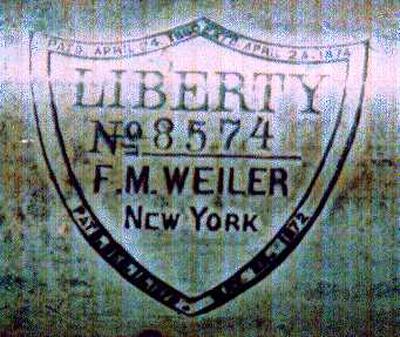
4 |
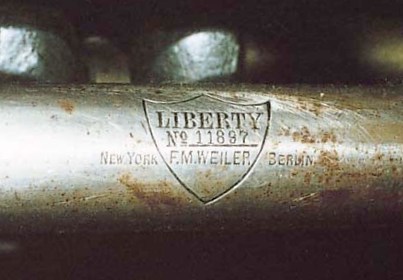
5 |
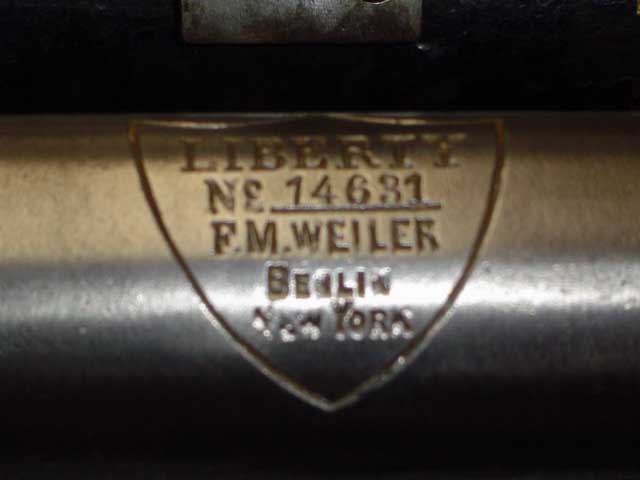
6 |
| Home | Projects | Equipment | Interests | About |
Press ModelsThe earliest advertisements for Liberty presses list three models: 2, 3, and 4. By 1886, two additional sizes (2A and 3A) had been added. An 1889 ad listed model number 5.Model numbers 3X and 4X are the same size as 3 and 4, but are built for extra heavy work such as printing boxes. The sizes are the inside dimensions of the standard chase. |
| |||||||||||||||||||||||
One of the oldest surviving Liberty presses lists only the inventor, Frederick Otto Degener.
Degener took on a partner, F. M. Weiler, and manufactured the press under the name Degener & Weiler in New York City.
Degener died in 1873, and in 1877 Weiler bought the business and ran it under the name "F. M. Weiler's Liberty Machine Works."
Weiler opened a Berlin office to sell presses in 1881, but it is not clear whether they started manufacturing there until about 1890.
Around May 1886 the business name changed to "Liberty Machine Works".
In 1886, a throw-off mechanism for the Liberty was patented.
Manufacturing in New York was discontinued in 1890, but continued in Berlin until about 1914.
On the earliest Liberty presses, only the serial number is present. Later, it was surrounded by a shield with the word "LIBERTY" at the top. The cities of manufacture are inside or beside the shield. New York & London appear on some early presses, later replaced by just New York. New York and Berlin appear on the newest presses.
Here are serial number images from the Liberty presses in Darmstadt, Healdsburg, Carson, San Jose, Brussels, and Belgium:

1 |

2 |

3 |

4 |

5 |

6 |
About 250 to 400 presses were produced each year, starting in 1860. Before 1886, the average rate was 385; afterward it was 273. Using this rule-of-thumb, it's possible to get an approximate date of manufacture from the serial number.
Scans of six patents related to the Liberty platen press are available on-line.
The earliest Liberty presses show only the April 24, 1860, patent, and it appears on the counterweight below the ink disk.
Liberty presses manufactured from the mid-1870s list all three patents and the extension of the original patent in a shield surrounding the serial number on the crank shaft. The dates are:
It appears all these patents were listed on Liberty presses until about 1890, even though they had expired between 1881 and 1889.
The earliest Liberty presses did not have a throw-off. An 1887 ad boasts the press is available "with or without throw-off, purchaser's choice." The earliest know Liberty press with a throw-off was manufactured about 1886. By 1889, the "New Style Noiseless" Liberty Job Press was being marketed, and its throw-off was no longer optional.
The lever is centered on a shaft immediately behind the platen. When in the upper position, the press makes an impression, but pulling the lever down into the lower position keeps the press from printing.
Liberty presses without a throw-off lever usually have a delivery board that fits closely behind the platen when the press is open. In order to make room for the lever, the delivery board on a Liberty press with a throw-off had to change. On early presses, the segment behind the platen was removed. Later, the delivery board is not rectangular but has a roundish cutout on the side toward the press.
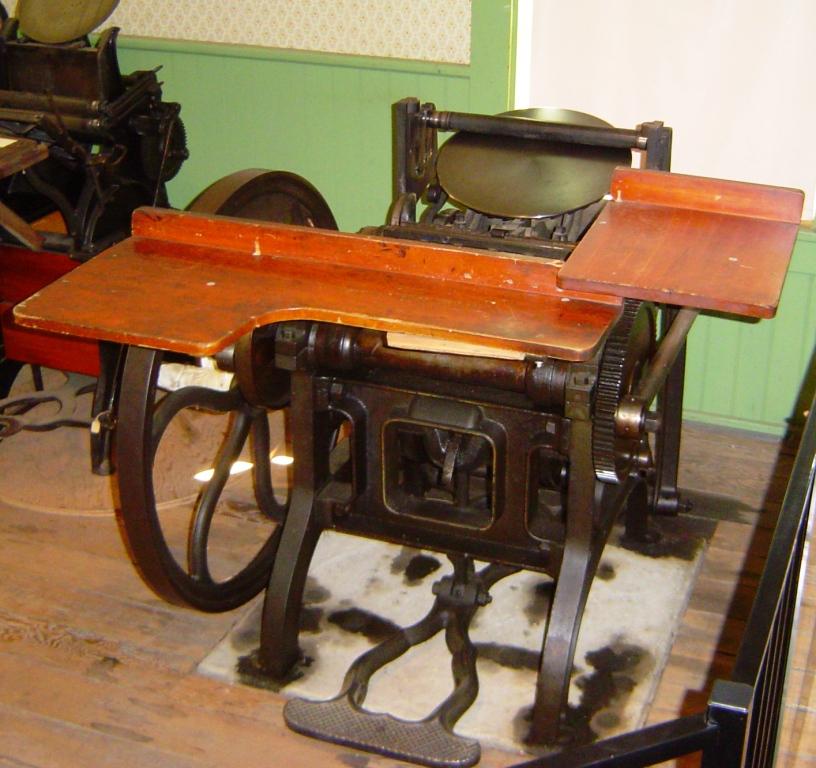
|
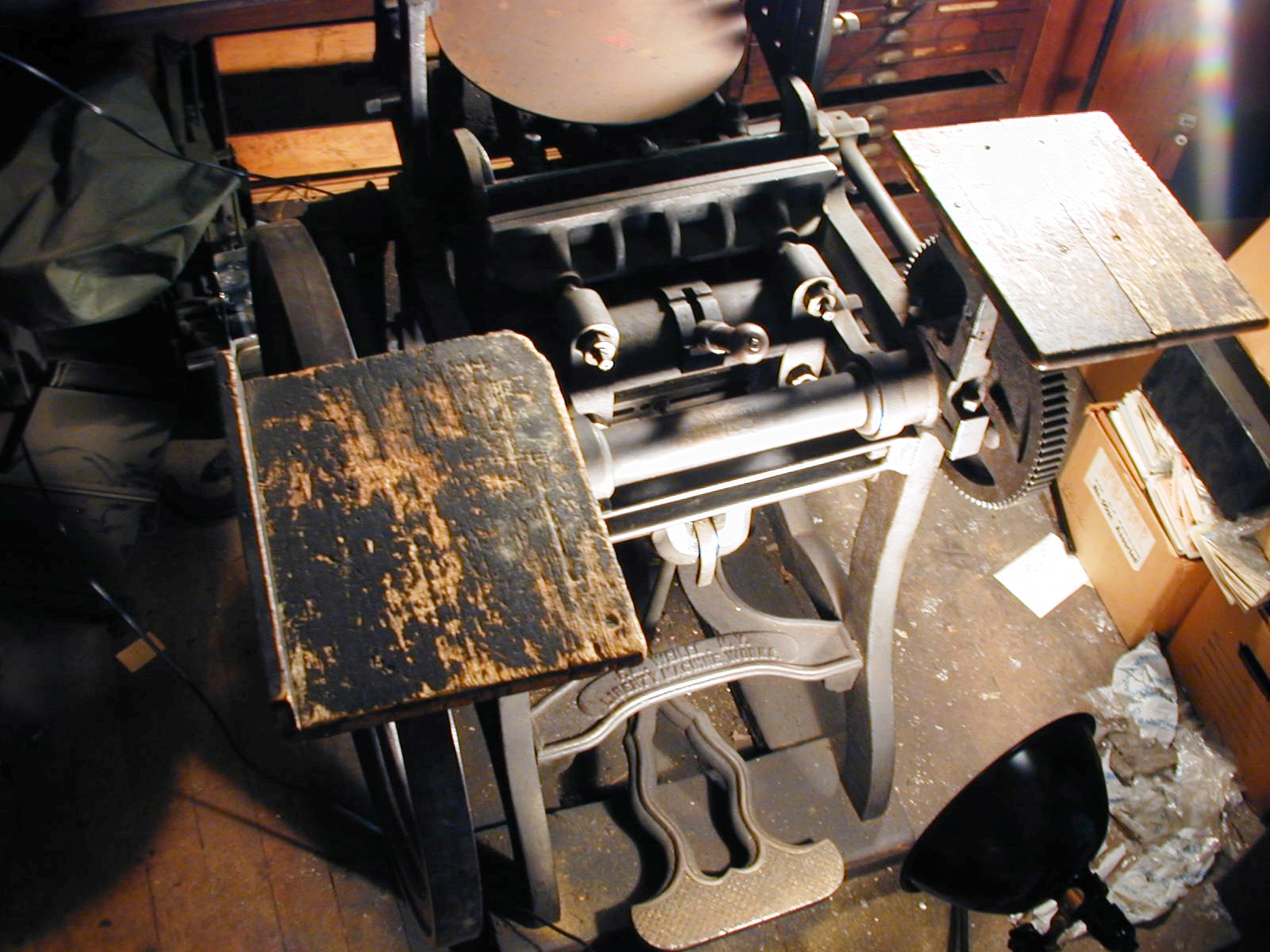
|

|
The Liberty at History San Jose (left) does not have a throw-off, while the throw-off lever can be seen on a press from Boston (center) and Herwig Kempenaers' Liberty (right).
Back to the main Liberty Platen Press page